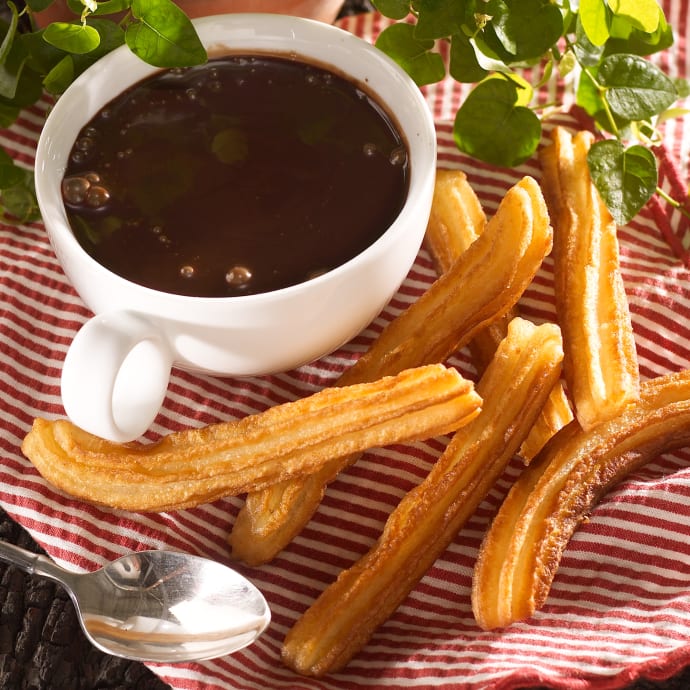Five Things I Love About Spain
I love traveling to Spain! When I step off the plane, I feel invigorated, like I am about to change my perspective on life, if just for a little while.
A lot of the reason for this is the different way that Spanish people approach their days, and the habits and customs that shape how they see the world.
Where we live, what we eat and how we socialize not only inform our daily lives, but the character of our culture. Spain is a country of tight, densely populated communities. Most Spanish people live in apartments or small homes not far from family and friends, whether they live in the metropolis of Madrid or in a small village in the mountains of Asturias. This facilitates the habits that make Spain what it is.
1. El Mercado
The lively local markets of Spain survive and thrive, even in this time of hipermercados and Ikea. These vibrant shopping areas are usually situated in the center of town, within easy walking distance for much of the community. There you can escape your apartment (or hotel, in my case!) and shop among the stalls offering bread baked that morning, beautiful produce and startlingly fresh seafood, much of it still wriggling with life. I’ll never forget visiting the market in El Puerto de Santa María and seeing an older woman tap her basket of brine shrimp to make them jump, displaying the freshness of her offering! There are usually multiple competing stalls selling similar items, so there is a variety of choices.
You can take a break from your shopping for an amazing cup of espresso coffee and a hot, crunchy churro pastry. Or, later in the day, you can stop to chat with a friend over a frosty caña of beer. For many people this is a daily ritual, an opportunity to catch up with friends and neighbors while taking care of necessary errands. Our habit of dashing off to the supermarket and filling a shopping basket in relative anonymity may be more efficient, but I miss the warmth and comradery of the local markets in Spain.
2. Gathering with Family and Friends
We Americans rightly cherish (most of the time!) our traditional family holidays, especially Thanksgiving and Christmas, when the whole clan reunites and celebrates together. People travel many hours from far-flung communities to reunite with their kin. I noted on a recent trip that traveling from California to the East Coast takes just as long as flying across the Atlantic Ocean!
But in Spain, family gatherings are often a weekly occurrence. There is no need for a flurry of travel since much of the family usually lives nearby. Because of this, parents, children, siblings, cousins and friends are all available to get together for a bite at the local tapas bar or come over for a weekend paella. Because they all come from the same area, they share similar traditions and appreciation for local cuisine. I am sure this can seem stifling for some who may want to strike out on their own. But for many there is something reassuring about this habit of family get-togethers.
3. Ours Is the Best!
I am always amazed at the fierce pride that Spanish people feel for their local foods. As a 21st century American, I am attuned to the culture of discovery: what is the new food trend? Have you tried that amazing new Thai joint? Wait until you taste this artisan cheese from Napa Valley! In some ways this adventurous palate is the reason I love Spain, there are so many local food treasures for me to discover every time I visit.
It is the opposite in many parts of Spain. Pride in the local cuisine means that foreign foods are unnecessary and inferior. I lived in El Puerto de Santa Maria for half a year with my family a few years ago. We loved the ‘pescaito frito’ fried fish and other local delicacies. But after a while we started craving a change, maybe a Mexican burrito or a plate of sushi. When we asked around, the typical response was, why would you want that? There is so much great food here!
And for a surprising number of Spanish people, “foreign” applies to a nearby city as much as to the cuisine of Mexico or Japan. I remember ordering a glass of Manzanilla sherry in the city of Córdoba. The nonplussed waiter informed me that they only offer Montilla, the local fortified wine. I ordered a glass and thought it tasted surprisingly similar to Manzanilla (I did not say as much to the waiter). Manzanilla comes from Sanlúcar de Barrameda, two hours down the road from Córdoba, and was clearly regarded as an inferior wine. I have had similar experiences regarding local versions of chorizo, tortilla española and Jamón Ibérico – what I might see as subtle differences in flavor or preparation are sources of pride and distinction, to be defended from all interlopers.
Of course, this is a generalization. There are many adventurous eaters in Spain, especially in the big cities. And there are strong local food traditions in America that garner fierce pride, such as pork barbecue in North Carolina or sourdough bread in San Francisco. But because people move around less in Spain and centuries of tradition that form each area’s food culture, I’ve found that there is an amazing number of foods in Spain that are tied to local identity and culture.
4. Café o Caña?
No matter whether you are in a small village or big city, it seems like every corner features a café or bar full of locals grabbing a refreshment and a bite. This is a chance to bump into old friends and catch up on local doings and is another way that life is experienced outside of the home in Spain.
Walking to work? How about a café con leche and some pan tostada? And a nice cortado (espresso ‘cut’ with a splash of hot milk) is perfect mid-morning or after lunch break. Heading home? Grab a caña (small glass) of frosty beer. There is no need to ask for a brand of brew, the regional beer is the freshest and best, of course. Some modern taps are covered in frost and have a digital temperature display to show that the beer will be served cold enough to make a penguin shiver.
5. Noise Is Joy
All of this interaction makes most Spaniards experts at socializing, which is nowhere more apparent than at the local restaurant or bar. Looking for a quiet candlelit dinner? You may be out of luck if the place is full! The sheer volume of talk is astonishing for an outsider. Tables of friends discussing politics, families sitting with children discussing their day, girlfriends sharing a few stories – everyone is talking, seemingly all at once!
Last spring, I traveled through Portugal with my brother Tim on my way to Cádiz, where we lived as kids. The first day in Lisbon, we sat outdoors at a beautiful old library that had been converted to a bar looking over the bay. While crowded, the scene was peaceful and fairly quiet. A few minutes later one of the tables was filled by a group of friends chatting and exclaiming at full volume. Spain had just entered the scene!
The strong affinity for the local and the communal is core to Spain’s identity. Local traditions and daily rituals are a source of intense pride. Life is lived outside of the home, shared with friends and family every day. Is this true for every Spanish person? Of course not. But it is a part of the national character. As an American I have to admit that this is both invigorating and exhausting for me – I am much more comfortable with a more segmented life, where I can retreat to my home at the end of the day. But I truly enjoy the energy and personal connections that seem so effortless in Spain. I can’t wait to visit a restaurant or café on my next trip and step into the Spanish way of living once again.
Featured Products
Filed under: Headlines by Wendy Jackson
No Comments »

 USA
USA 








 © Jackson Lieblein, LLC 2015.
© Jackson Lieblein, LLC 2015.
